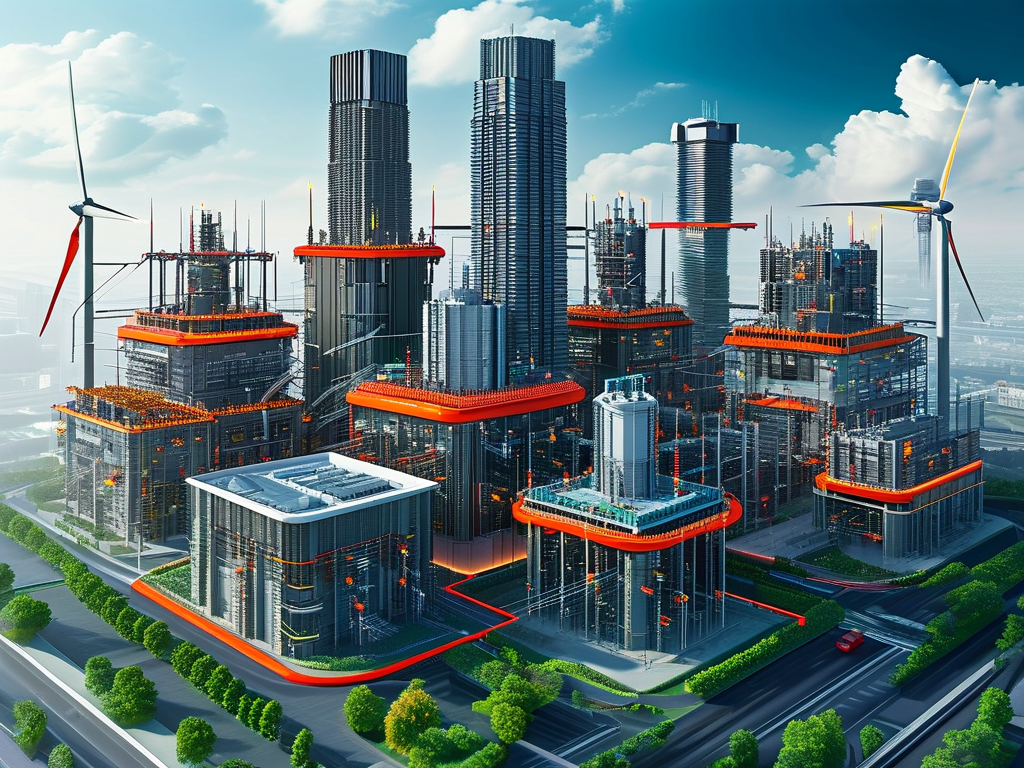In modern engineering systems, distributed electrical control architectures have become a cornerstone for achieving scalability, flexibility, and reliability. These architectures are widely adopted in industries such as automotive manufacturing, industrial automation, and smart grid management. Understanding their types and applications is critical for optimizing system performance. This article explores the primary categories of distributed electrical control architectures, their characteristics, and real-world use cases.

Centralized vs. Decentralized Frameworks
One of the fundamental distinctions in distributed electrical control architectures lies in their organizational structure. Centralized architectures rely on a single control unit to manage all subsystems. This approach simplifies decision-making but introduces risks such as single points of failure. For example, in early automotive systems, a central electronic control unit (ECU) handled tasks like engine management and braking. However, as vehicles incorporated advanced driver-assistance systems (ADAS), this model struggled to meet real-time processing demands.
In contrast, decentralized architectures distribute control across multiple nodes. Each node operates independently but communicates with others through networks like CAN (Controller Area Network) or Ethernet. Industrial automation systems often use this model to coordinate robotic arms, conveyor belts, and sensors without overloading a central processor. Decentralization enhances fault tolerance—if one node fails, others continue functioning—but requires robust communication protocols to ensure synchronization.
Zone-Oriented Architectures
A rising trend in sectors like automotive engineering is the zone-oriented architecture. Here, subsystems are grouped geographically or functionally into "zones," each managed by a dedicated zone controller. For instance, a modern electric vehicle might separate controls for the front powertrain, rear battery management, and cabin infotainment into distinct zones. This design reduces wiring complexity and improves scalability. Tesla’s vehicle platforms, for example, use zonal controllers to streamline updates and integrate new features like autonomous driving modules.
Zone-oriented systems often leverage Ethernet-based backbones for high-speed data transfer. However, they demand careful partitioning of responsibilities to avoid overlaps or gaps in control. Engineers must also address latency issues when coordinating time-sensitive tasks across zones.
Modular and Scalable Designs
Modular architectures emphasize reusability and customization. Components are designed as self-contained modules with standardized interfaces, allowing them to be added or removed without disrupting the entire system. This approach is prevalent in renewable energy systems, where solar inverters or wind turbine controllers can be expanded as power generation needs grow. Companies like Siemens deploy modular designs in smart grid solutions to adapt to fluctuating energy demands.
Scalability is a key advantage here, but module interoperability remains a challenge. Ensuring that third-party components comply with communication standards—such as IEC 61850 for power systems—is essential.
Cloud-Integrated Distributed Systems
With the rise of IoT and edge computing, cloud-integrated architectures blend local control with cloud-based analytics. Sensors and actuators operate at the edge, handling real-time tasks, while the cloud processes historical data for predictive maintenance or optimization. For example, ABB’s industrial robots use edge devices to manage precise movements, while cloud platforms analyze performance trends to schedule maintenance.
This hybrid model reduces bandwidth usage and latency but introduces cybersecurity concerns. Encrypting data transmissions and implementing access controls are critical to safeguarding sensitive operations.
Distributed electrical control architectures are evolving to meet the demands of complex, interconnected systems. From decentralized industrial networks to cloud-integrated smart grids, each type offers unique benefits tailored to specific applications. Engineers must weigh factors like real-time performance, scalability, and security when selecting an architecture. As technologies like 5G and AI continue to advance, these frameworks will play an even greater role in shaping the future of automation and electrification.

